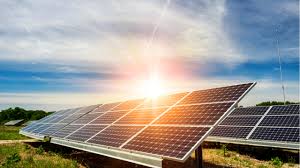Bhubaneswar: In the last four years, the solar power generation capacity in the country has increased by more than 35,000 MW, while in Odisha it has increased by only 40 MW. Odisha’s solar power generation capacity has increased from 420 MW in 2020 to 465 now.
According to information received about solar power generation, due to the central government’s focus on renewable energy, especially solar energy, the country’s solar power capacity has more than doubled in these four years i.e. from 35,607 MW to 72,018 MW. In Odisha, the capacity increased by 40 MW during this period while in Chhattisgarh it has increased from 424 MW to 1015 MW.
Andhra Pradesh, Maharashtra, Madhya Pradesh, Rajasthan, Gujarat and Telangana are among the states that are leading in the field of solar energy. Rajasthan has the highest solar power capacity in the country at 18,000 MW. In the last four years, the solar power capacity in the state has increased from 5275 MW to 18,089 MW. Gujarat has a capacity of 10,417 MW, while Maharashtra has a capacity of 5,064 MW, Andhra Pradesh 4,555 MW and Madhya Pradesh 3,167 MW.
However, the Union Government is aiming to generate more solar energy through solar parks. The target is to generate 40,000 MW of solar power through at least 50 solar parks. Similarly, 12,000 MW solar panels connecting to the grid will be set up through government agencies. Not only this, along with installation of rooftop solar power projects connecting the grid, green energy corridors will be set up for inter-state power transmission.
In the meantime, the Central Government has given the green signal to 100 percent foreign investment to invest more in the solar energy sector. The duty on inter-state transport of renewable energy, especially solar power, wind power, etc. produced within the state, has been waived till the end of June 2025. In order to promote renewable energy, the Central Government has already launched the Green Hydrogen Mission.
In the meantime the State Government has also started work on installing floating solar panels in major water bodies in the state with emphasis on solar energy. At the same time, steps are also being taken to generate more solar energy by installing solar panels on the ground in the vast areas lying fallow in the state. Government subsidy is being provided to those who are setting up small solar power projects for private use on their own initiative.


